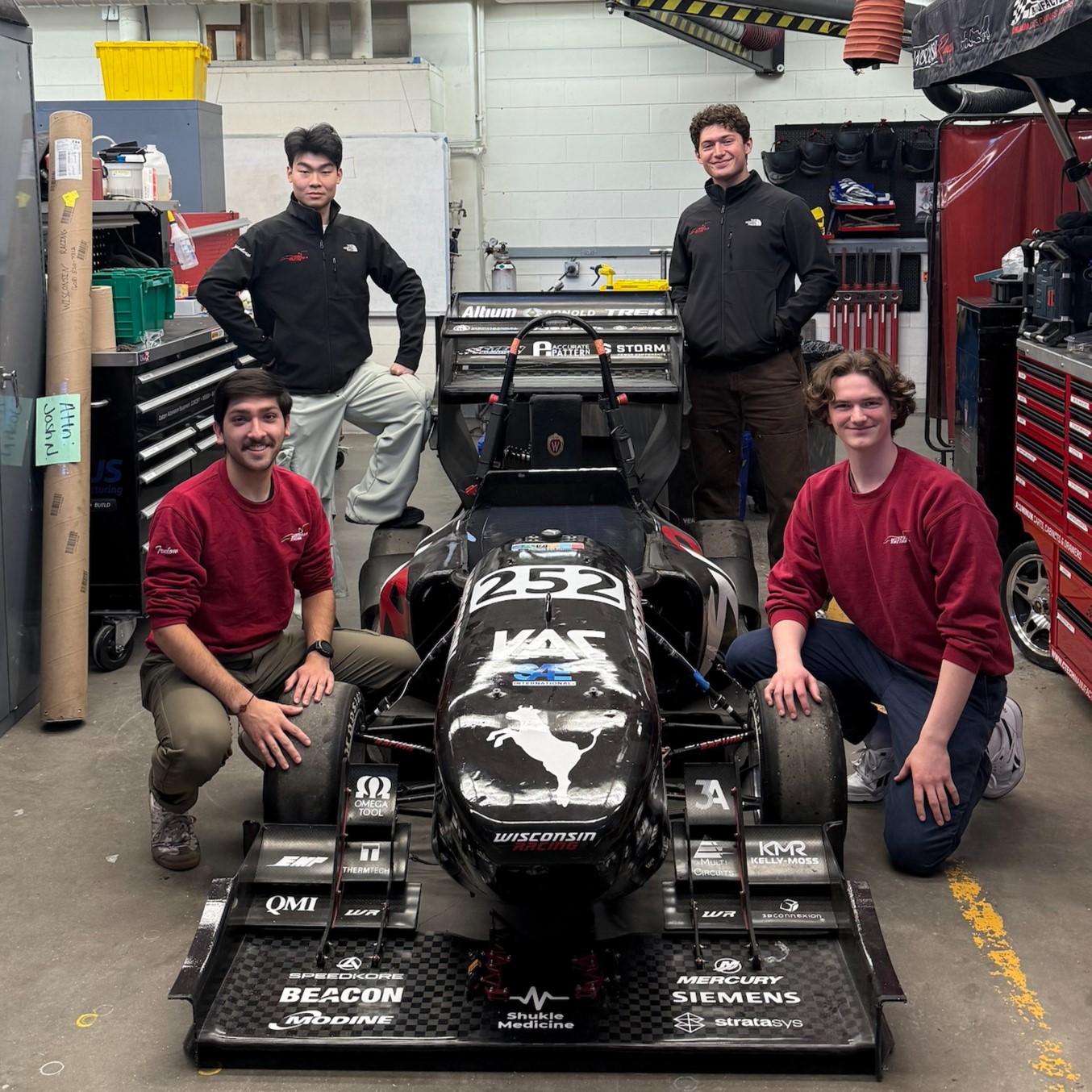 Formula SAE Electric Active Aerodynamic Wing Design
Formula SAE Electric Active Aerodynamic Wing Design
Problem statement
The Wisconsin Racing Formula SAE Team (WR) competes with a small electric open wheel racecar in the Michigan Formula SAE Electric event every summer. This competition consists of various dynamic events that award points based on placement. Some events are worth more than others, and some place importance on certain performance metrics over others. In the endurance event, WR currently must limit the performance of the vehicle to ensure the accumulator has enough state of charge to complete the event. This was the case last year, where the driver reported self-limiting throttle input, hard acceleration, and ‘babying’ of the car to finish the event. This event awards the most points. Being able to rapidly change aerodynamic modes between events is also essential to not receiving point penalties for late arrival.
Calculations using last year’s endurance event data show that drag alone used 34% of the energy stored in our 224e racecar accumulator. An active drag reduction system would allow rapid aero mode change both dynamically on track, and in between events, and allow for aerodynamic optimization of downforce for the endurance event that would help guarantee a finish with the same accumulator. Switching from a detuned (low downforce/drag) aero config to a theoretical aero config with active front and rear wings (switching from high to low downforce modes on straight sections of track) could save 6% of state of charge over the course of the entire event, likely with lower laptimes. A widely cited thesis from students at the University of Texas Arlington showed a 1-1.5 second reduction in lap time over an example 2013 FSAE autocross circuit in a parametrized lap time simulator when comparing a fixed wing aero config to an active front and rear wing. Added weight would come from servos which could be placed low to maintain CG, however the tradeoff between linkage weight and the current adjustability plate weight would be negligible. Auxiliary low voltage (LV) power draw from this system would be within the capability of the LV system. To win the competition for the 2025-2026 season, WR needs an aerodynamic package that can outperform the downforce metrics and drag metrics of the 224e racecar, meet the endurance envelope of the current battery architecture, and handle performance upgrades to the car for the next 4 years. Additionally, the DRS system would have to integrate with the low voltage electronics of the car, have driver control and tuning on the steering wheel, and meet the rules requirements of the SAE competition.
Team members
Charles Gravelle – facilitator
Daniel Papikiants – accountant
Frederic Truslow – admin
Kevin Shi – communicator
Client
Mingtian Xu
FSAE Student Org